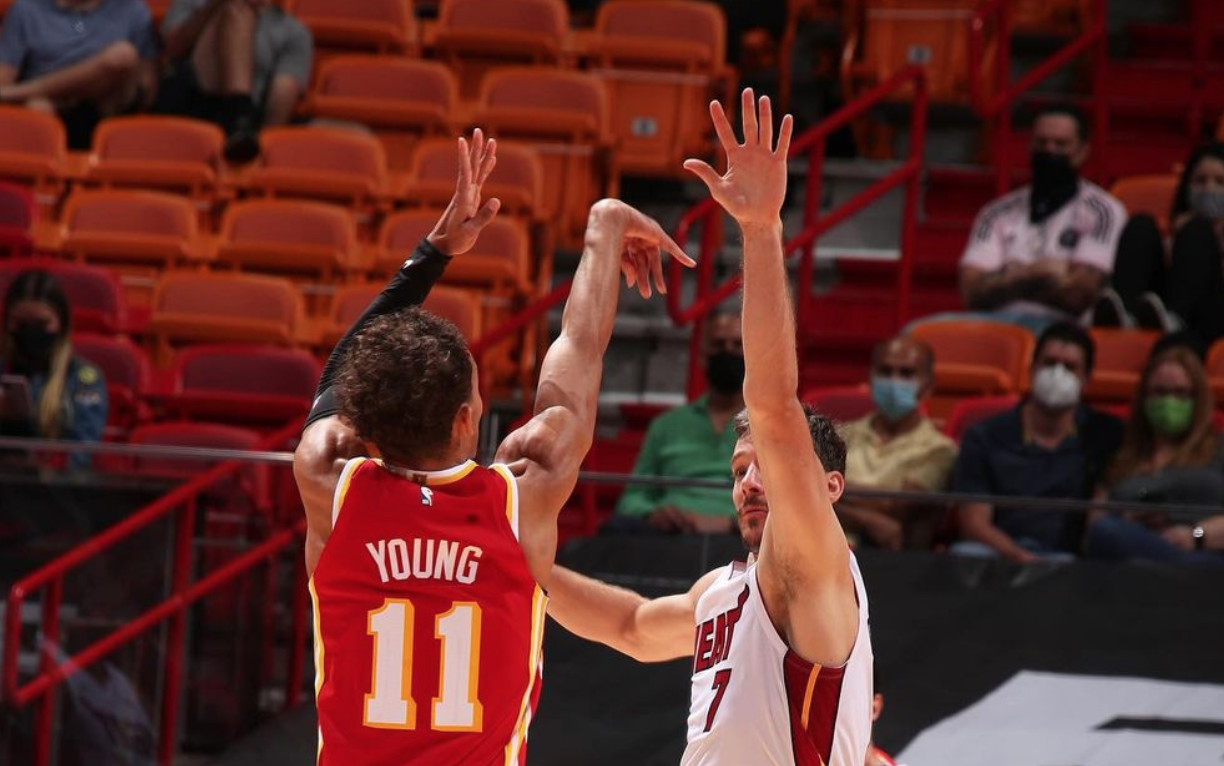Making 5 of 23 shots on 38 percent true shooting (TS%) is a performance that appears to have no place among the NBA’s elite in 2021. It is with these shooting statistics that Trae Young (23 points, 10 assists) was still credited with leading the Atlanta Hawks to a Game 7 upset in Philadelphia, sending them to the Eastern Conference Finals.
Trae Young’s decision-making is frustrating when it’s not thrilling. He takes ill-advised threes at distances he hasn’t mastered. He’s not a great finisher at the rim, not an explosive athlete, and is let down by his height, size, and wingspan in most of his guard matchups. But it never seems to matter how abysmally this guy shoots or how physically overmatched he might be on any given night.
Trae Young is understood as a threat on every possession.
Why? And can he continue to be considered a dangerous player if he keeps throwing up long-range bricks?
In the 2020-21 season, Trae Young shot roughly 44 percent from the field and 34 percent on 3-pointers with an effective field goal percentage (eFG%) a shade under 50. Despite making an incredible 8 of 13 shots from beyond 35 feet, Young still only shot 33.8 percent from 25-feet-plus.
Save for the excellent free throw percentage (88.6), that isn’t the profile of a “great” shooter in today’s NBA. But the current NBA’s obsession with efficiency–due mainly to the late-2010s Warriors elevating the league’s shooting standard–minimizes the value of high-usage playmakers.
James Harden’s time in Houston, even after winning an MVP, received undue criticism for not having the eye-popping percentages of Giannis Antetokounmpo or Wardell. But when a perimeter player is asked to be the offense–not just the top scorer–approaching 50-40-90 can only ever be a sparkly bonus. Ball-dominant guards in charge of creating shots for themselves and others are like truck engines: it may take more effort to go far, but look at how much they can haul!
Trae Young’s array of floaters and deep threes are not as reliable as a Durant 15-footer or a Giannis eurostep in the lane. But they are concerning enough to warrant Young’s “scoring threat” status whenever he has the ball. It is confidence in this knowledge, as well as his court vision, adept handle, and crafty passing that unlock Young’s highest form as a playmaker.
Funny enough, the player Young resembles the most in terms of skillset and impact is the player he was traded for on Draft Night 2018: Luka Dončić. Luka’s size and finishing lend him to LeBron comparisons, but Luka and Trae share the same freelance guard spirit that is forcing the “point” and “shooting” guard roles into the shadows. Both young stars are offensive juggernauts unique to this new era of hoops, flamboyant enough to put on a show and ingenious enough to power a whole team.
Unlike today’s hyperefficient stars, a poor night from the field says very little about Trae Young’s impact on any given night. Skilled at drawing fouls, he can shoot below 40 percent and still drop 30 like in the Hawks’ series-clinching first round playoff win against the Knicks. And with improved trust in his teammates, an area of growth for Young according to Hawks coach Nate McMillan, assists will continue to effortlessly pile up. In the 2021 Playoffs, Young logged 10 or more assists in half of his games (8 of 16) with two more 9-assist games.
Advanced stats give us more ways to appreciate the evolution of basketball and its latest generation of players. But despite the skilled analysts commenting on the game today, not every player with underwhelming nerd numbers (a term I use lovingly) can be defined by them. Certain formulas strip the luster of Trae Young’s game, but his performance this year has proved he’s as bright as any other young star in the NBA today.
